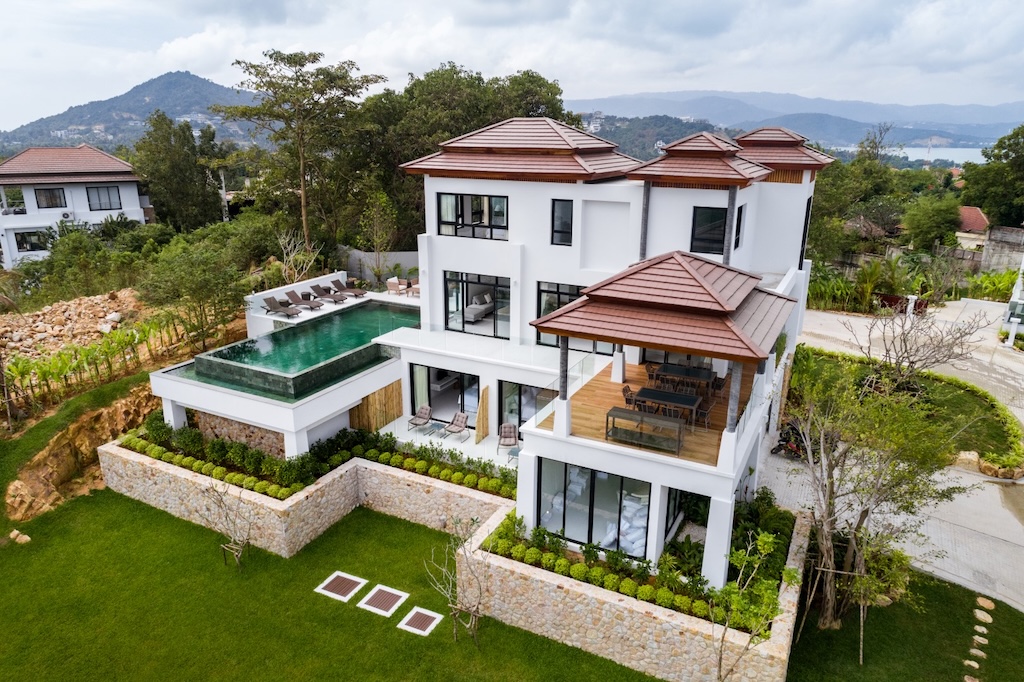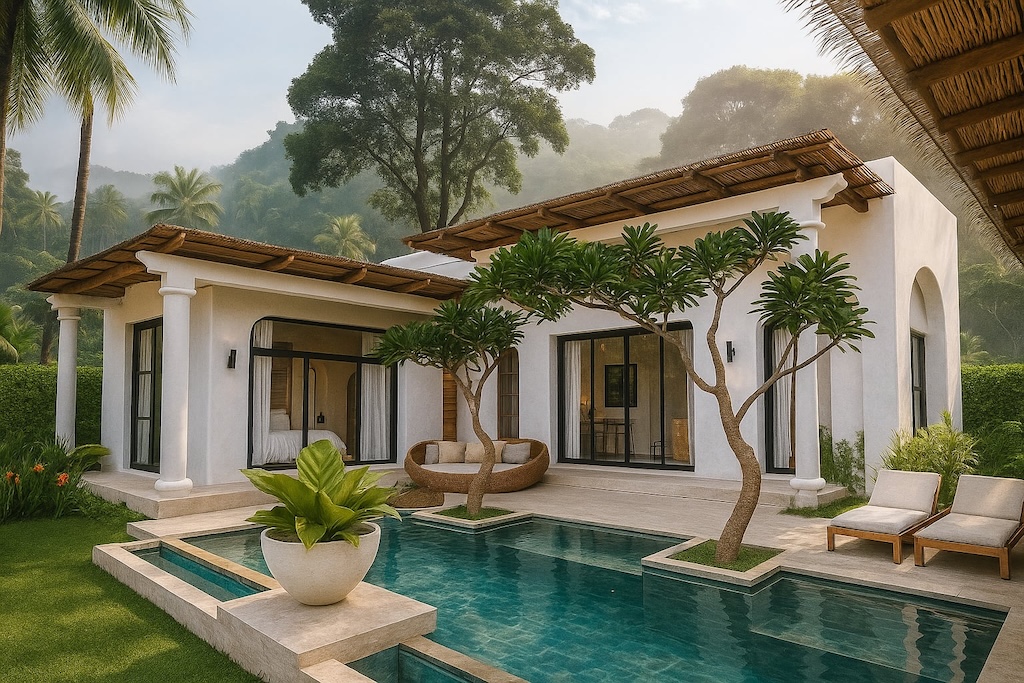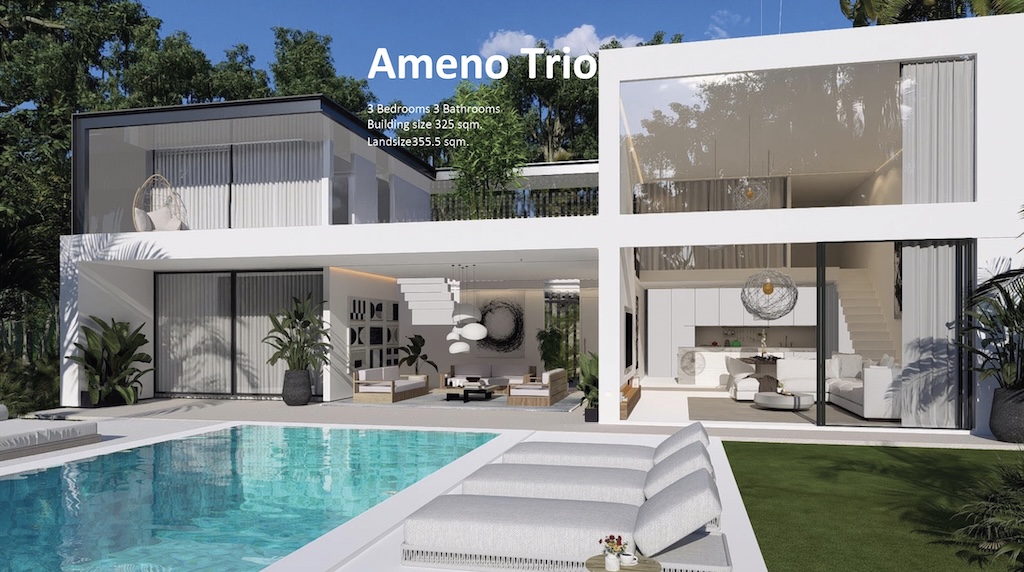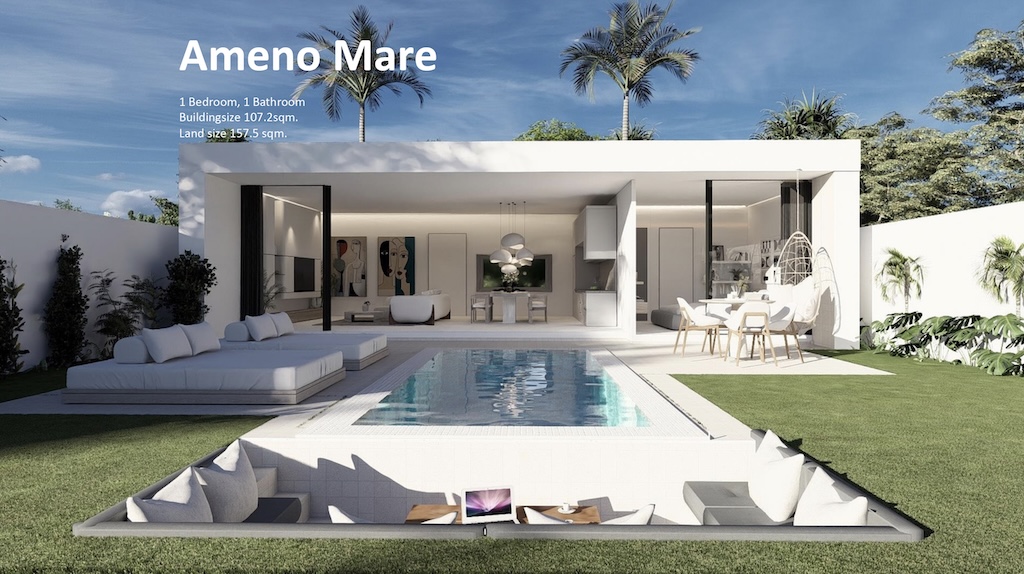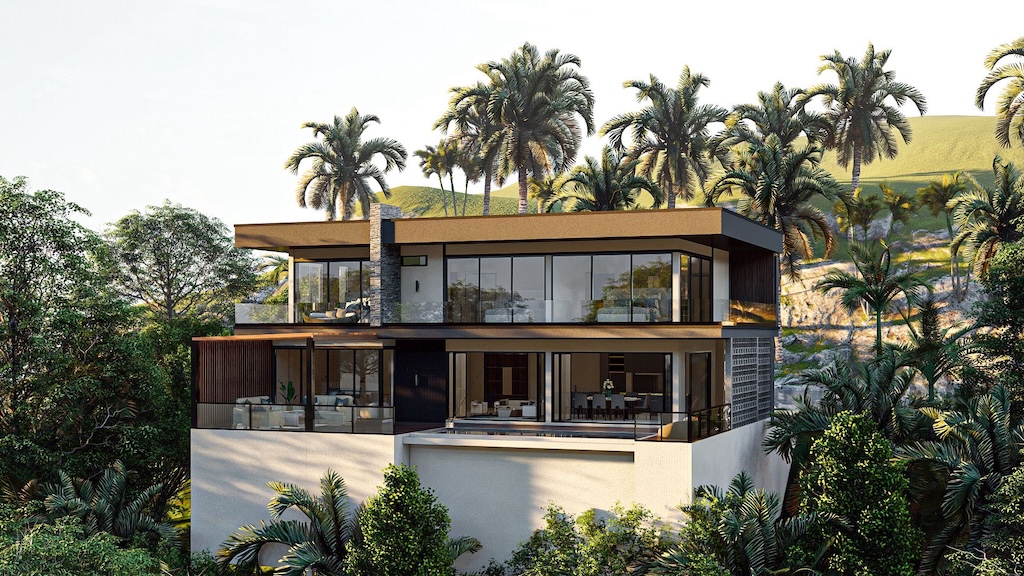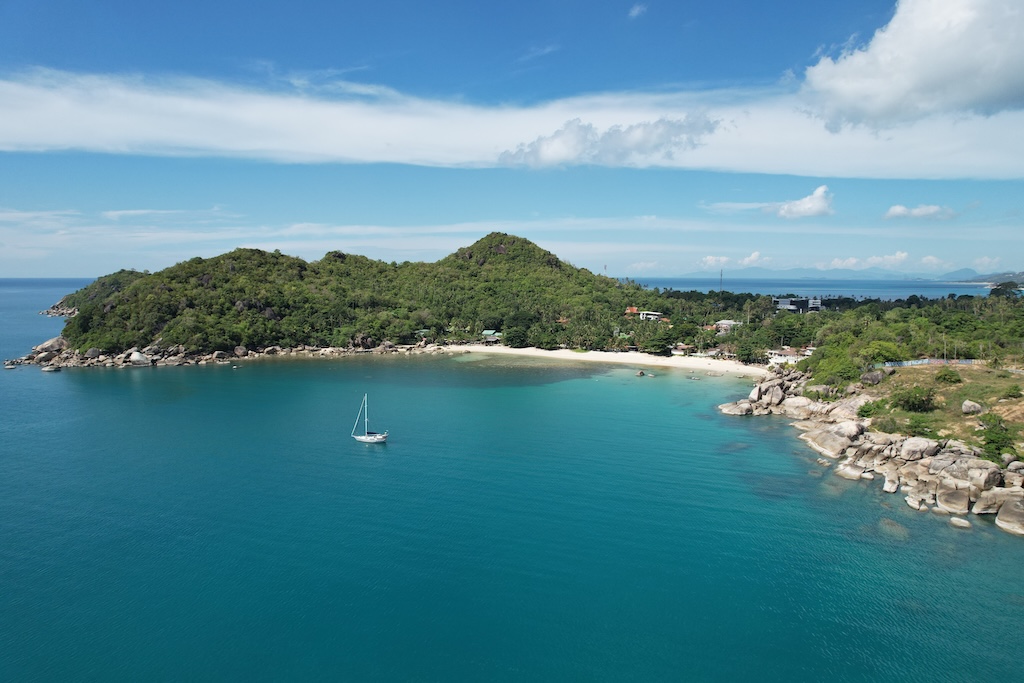
The Local’s Guide To Different Areas Of Koh Samui – A stunning island paradise, where pristine beaches meet crystal-clear waters and lush greenery creates a dream destination for travelers. From the powdery white sands of Chaweng Beach to the tranquil shores of Maenam, each corner of this tropical haven tells its own unique story.
Whether you’re drawn to the vibrant nightlife of Chaweng, the preserved traditional charm of Bophut’s Fisherman’s Village, or the peaceful luxury of Choeng Mon’s white sandy beaches, Koh Samui offers distinctly different areas across its various regions. In fact, while some areas buzz with tourist energy, others maintain their authentic Thai atmosphere, like Hua Thanon with its traditional fishing village and vibrant market.
This comprehensive areas guide will walk you through each unique part of Koh Samui, helping you understand the character and offerings of every district. From the iconic 12-meter Big Buddha statue in Bang Rak to the upscale retreats of Laem Sor, you’ll discover exactly what makes each area special and which one might be perfect for your island experience.
Koh Samui’s East Coast: Vibrant Beaches and Nightlife
The east coast of Koh Samui stands as the island’s entertainment epicenter, featuring a string of stunning beaches that cater to different vacation styles. From bustling tourist hubs to serene stretches of sand, the areas along this coastline offer diverse experiences for every type of traveler.
Chaweng: The Island’s Bustling Heart
Stretching an impressive 7 kilometers along Samui’s eastern shore, Chaweng Beach commands attention as the island’s primary tourist destination. The beach showcases gradually sloping shorelines with calm waters throughout most of the year, making it particularly suitable for families with young children.
Early mornings between 6-9 AM offer the most peaceful experience for sunrise views and beach walks. Additionally, the beach remains notably quieter before 10 AM and after 5 PM, providing perfect windows for those seeking tranquility.
Water sports enthusiasts will find plenty of activities here, with current rates including:
- Jet ski rental at 1,500-2,000 baht per 30 minutes
- Parasailing adventures for 800-1,000 baht
- Kayaking sessions at 200 baht per hour
- Stand-up paddleboarding for 400 baht hourly
Lamai: A More Relaxed Alternative
Lamai Beach presents itself as a more laid-back destination compared to its northern neighbor. The area maintains its Thai village charm, with rustic beach bars and restaurants dotting the shoreline. Unlike Chaweng’s developed landscape, Lamai’s surrounding hills remain largely untouched, creating a more authentic island atmosphere.
The beach divides naturally into two distinct sections. The southern portion features large boulders in the water, creating picturesque photo opportunities alongside rustic restaurant bars. Meanwhile, the northern section shares similar characteristics but maintains some distance from Lamai’s center, offering a more secluded experience.
Food enthusiasts should note that Lamai hosts Koh Samui’s largest food market. Here, you’ll discover an extensive selection of Thai drinks, desserts, fresh produce, and seafood. Furthermore, every Sunday evening, a special walking street market emerges, presenting an array of Thai favorites.
For wellness seekers, Lamai offers premier Muay Thai training camps with daily schedules suitable for all skill levels. The area also caters to health-conscious travelers with detox accommodations and numerous vegan and raw food restaurants.
Chaweng Noi: Luxury with a View
Positioned at the more exclusive southern tip of Chaweng beach, Chaweng Noi presents a refined coastal experience. This area distinguishes itself with crystal-clear, calm waters and pristine sandy beaches that invite visitors to unwind in a more upscale setting.
The location strikes an ideal balance between seclusion and convenience, situated just 10 minutes from the vibrant center of Chaweng. This proximity allows guests to easily access the main strip’s entertainment while maintaining a peaceful retreat. The area has particularly attracted luxury developments, with several five-star resorts nestled into the hillside, offering breathtaking views of the Gulf of Thailand.
Chaweng Noi’s beaches feature a mix of high-end resorts and intimate boutique properties, all sharing access to the same beautiful shoreline. The area has managed to preserve its natural charm while providing modern amenities, creating an atmosphere that appeals to travelers seeking both comfort and authenticity.
Exploring Koh Samui’s Northern Shores
The area along the northern shores of Koh Samui offer a perfect blend of cultural richness and serene coastal living, each area presenting its own distinct character and charm.
Bophut and Fisherman’s Village: Old-World Charm
Bophut’s Fisherman’s Village stands as a testament to time, preserving its historical essence through wooden shophouses and quaint buildings. Although the central pier and fishing community have moved elsewhere, the spirit of this old village remains intact through its architectural heritage.
The area features a well-maintained stretch of golden sands along Bophut Beach, ideal for peaceful swimming sessions. Moreover, the beach’s western section provides excellent swimming conditions with an upmarket ambiance, although the eastern portion near Fisherman’s Village offers slightly different water quality.
Every Friday evening, the village transforms into a vibrant night market, where visitors can explore:
- Thai handicrafts and local artwork
- Traditional street food and beverages
- Authentic souvenirs and clothing
- Live music and cultural performances
Maenam: Peaceful Beachfront Living
Stretching approximately 5-7 kilometers along the northern coast, Maenam Beach presents itself as a haven for those seeking tranquility. The beach maintains its authentic charm, remaining largely unchanged over the past decade. The eastern section houses most developments, whereas the western half offers seclusion with scattered resorts.
This Koh Samui area distinguishes itself with coarser yet walkable sand and provides ample shade under palm trees. Families appreciate the gentle slope into the water, making it suitable for children, though the depth increases quickly about 30 yards from shore. Maenam offers spectacular views of neighboring Phangan Island.
Bang Rak (Big Buddha): Cultural Significance
Bang Rak, commonly known as Big Buddha Beach, serves as a significant cultural landmark, housing the iconic Wat Phra Yai temple. The temple’s centerpiece, a magnificent 12-meter-high golden Buddha statue constructed in 1972, has become one of Koh Samui’s primary tourist attractions.
The Buddha statue depicts the Mara posture, symbolizing enlightenment and triumph over temptation. The temple complex incorporates elements of:
- Animism
- Brahminism
- Traditional Buddhist architecture
The surrounding area features numerous restaurants and shops, creating a lively atmosphere. For an authentic cultural experience, consider visiting during early morning hours when local devotees bring offerings and monks perform their daily rituals.
The beach itself, though not primarily known for swimming, offers several private piers and maintains a more local atmosphere compared to other areas. This unique combination of spiritual significance and coastal charm makes Bang Rak an essential stop for those seeking to understand Koh Samui’s cultural heritage.
Throughout these northern shores, you’ll discover a harmonious balance between preserved traditions and modern amenities. Each area contributes its own chapter to Koh Samui’s story, from the historical lanes of Fisherman’s Village to the spiritual significance of Bang Rak, creating a diverse tapestry of experiences for visitors to explore.
The Serene West and Southwest Coasts
Along Koh Samui’s western coastline, tranquil beaches and authentic local experiences await those seeking respite from the island’s more frequented areas.
Lipa Noi: Family-Friendly Beaches
Lipa Noi stands out as an ideal Koh Samui area for families, especially those traveling with young children. The beach boasts fine soft sand with virtually no rocks or coral in the water. A remarkable feature is its shallow waters extending up to 100 meters from shore, making it exceptionally safe for little ones to splash and play.
The area maintains a distinctly residential character, attracting a slightly older demographic that contributes to its family-friendly atmosphere. Several beachside establishments offer evening entertainment, such as Thai dancing and acrobatics. For adventure enthusiasts, Lipa Noi houses a thrilling zip line ride through the treetops, offering breathtaking views of Samui’s lush landscapes.
Taling Ngam: Spectacular Sunsets
Situated on the southwestern coast, Taling Ngam emerges as Koh Samui’s premier sunset destination. This pristine stretch of beach, surrounded by tropical jungle and creamy-colored sand, offers unrivaled views of the Five Islands and Ang Thong National Marine Park.
The area features:
- Up to 10 beachside restaurants serving Thai and international cuisine
- Options for dining directly on the beach or indoors
- Spectacular sunset views with silhouettes of the Five Islands
Despite being at least 20 minutes from Nathon and almost an hour from Chaweng, Taling Ngam’s remoteness adds to its appeal. The area successfully preserves its untouched naturalness, providing a precious escape from the busy world. Accommodation options range from modest bungalows to upscale resorts, catering to various preferences and budgets.
Nathon: Local Life and Ferry Hub
As Koh Samui’s capital and primary ferry terminal, Nathon serves as both an administrative center and a gateway to neighboring islands. The town presents an authentic slice of Thai life, with its main road running parallel to the seafront, featuring numerous quiet offshoots perfect for exploration.
The waterfront area comes alive every Saturday evening with the Nathon Market/Walking Street. This sprawling plaza transforms into a multi-block buffet interspersed with market stalls offering local goods, clothes, and souvenirs. Since Nathon functions as Koh Samui’s industrial center, the walking street primarily attracts locals alongside budget-conscious travelers.
For those interested in shopping, Nathon houses unique establishments not found elsewhere on the island. Notable shops include:
- Little Buddha Aromatherapy Products – featuring local bath products and natural cosmetics
- Thai Winery House and Souvenirs – offering local dessert wines from Thai fruits
- Khunchan Furniture and Home Décor – showcasing Thai furniture and spirit houses
The best time to explore Nathon is either during morning hours or later in the day, as midday heat can be intense. The town faces west, providing excellent vantage points for watching boats and enjoying sunset views of the neighboring Five Islands. For travelers arriving by ferry, Nathon serves as a convenient transportation hub, with regular connections to the mainland and surrounding islands.
Hidden Gems of Southern Koh Samui
Southern Koh Samui harbors some of the island’s most enchanting locations, where untouched beaches and authentic cultural experiences create unforgettable memories for adventurous travelers.
Laem Set and Laem Sor: Secluded Luxury
Nestled within Ban Kao Bay on Koh Samui’s southeast coast, Laem Set and Laem Sor beaches offer an escape from the bustling northern regions. The area distinguishes itself with unique granite boulders that divide the beach into intimate sandy coves, creating natural private spaces for beachgoers.
The shoreline stretches impressively during summer months, with low tides revealing expansive sand flats extending over 100 meters to the offshore reef. Luxury beachfront villas and upscale resorts dot the coastline between swaying coconut palms, each property essentially offering its own private beach experience, even though all beaches officially remain public.
The internationally acclaimed Kamalaya Wellness Center occupies perhaps the most prime section of the beach, with accommodations thoughtfully integrated into the hillside valleys. For those seeking complete tranquility, certainly, the main ring road’s distance from the beach ensures minimal disruption from traffic or tourist activities.
Water enthusiasts should plan their visits strategically, as swimming conditions vary throughout the year. The best swimming opportunities present themselves during specific months, with the rest of the year offering alternative coastal activities like beachcombing and photography.
Hua Thanon: Authentic Fishing Village Experience
In the southeastern corner of Koh Samui, Hua Thanon stands as a testament to traditional island life. This quaint fishing village continues its centuries-old practices, largely untouched by mass tourism. As Koh Samui’s primary Muslim community, Hua Thanon presents a unique cultural tapestry, housing the island’s only mosque.
The village’s character emerges through:
- Traditional Chinese wooden houses lining small sois
- Local shops offering everything from foodstuffs to bike repairs
- A thriving daily market showcasing fresh seafood catches
The fishing fleet remains the heart of Hua Thanon’s identity, with daily life revolving around the fishing market. Walking through the village streets reveals a self-sustaining community where local trade flourishes, and traditional businesses continue to serve their neighborhood’s needs.
Visitors exploring Hua Thanon’s market will discover an impressive variety of seafood delicacies, perfect for those staying in nearby villas or seeking authentic local ingredients. The village’s welcoming atmosphere encourages exploration, with friendly residents happy to share glimpses of their traditional way of life.
Beyond the village center, Thong Krut Beach emerges as another hidden treasure of southern Koh Samui. Known locally as the fishermen’s village, this area offers seaside seafood shacks serving fresh catches of the day. The laid-back atmosphere provides an ideal setting for enjoying traditional Thai cuisine while taking in stunning coastal views.
For those venturing further south, Phang Ka Beach presents a peaceful retreat with shallow, reef-sheltered waters perfect for snorkeling. The coastline features modest single-story bungalows alongside lush, coconut-covered hills. Nature enthusiasts might spot white egrets wading through shallow waters, hunting for fish – a rare glimpse of wildlife in its natural habitat.
The southern region’s authentic charm extends to its dining options, with the Cool Bar in Ban Kao offering a rustic setting and moderate prices. Though swimming might be limited during low tide due to visible stones, the serene atmosphere and beautiful views more than compensate for this minor inconvenience.
Seasonal Considerations for Different Areas In Koh Samui
Timing your visit to different areas of Koh Samui significantly impacts your island experience, as each season brings distinct weather patterns and varying crowd levels across the island’s diverse regions.
Monsoon Season Impact (October-December)
The monsoon season transforms Koh Samui’s landscape between October and December, with November experiencing the heaviest rainfall. Throughout this period, temperatures fluctuate between 24°C and 30°C. Nevertheless, rain showers typically last only 20-60 minutes, allowing for plenty of indoor activities.
During these months, specific areas offer unique experiences:
- Eastern beaches like Chaweng and Lamai see reduced water sports activities
- Northern regions around Big Buddha remain accessible for cultural visits
- Western coastal areas experience stronger winds and rougher seas
The monsoon season presents several advantages for budget-conscious travelers:
- Accommodation rates drop significantly
- Popular attractions become less crowded
- The island’s vegetation turns remarkably lush and vibrant
A highlight of this period is the Loy Krathong festival in November, where floating lanterns illuminate the night sky across all beach areas.
High Season Crowds (December-April)
As the calendar turns to December, Koh Samui enters its peak tourist period, lasting until April. This timeframe brings distinct characteristics to different regions:
The eastern coast, primarily Chaweng and Lamai, experiences:
- Maximum occupancy rates in beachfront properties
- Premium pricing for accommodations and activities
- Optimal conditions for water sports and beach activities
The northern shores around Bophut and Maenam maintain their charm with:
- Consistent crowds at Fisherman’s Village
- Extended operating hours for local markets
- Clear waters ideal for swimming and snorkeling
Prices surge approximately 40-50% during this period, with December and January marking the absolute peak due to holiday celebrations.
Sweet Spot Months (May-June, September)
For travelers seeking balance between weather conditions and crowd levels, May through June and September offer ideal visiting windows. These months present unique advantages across different areas:
Southern regions (Laem Set and Hua Thanon):
- Fewer tourists yet pleasant weather conditions
- Better rates for luxury accommodations
- Clear waters for snorkeling and diving
Western coastline (Lipa Noi and Taling Ngam):
- Perfect conditions for sunset viewing
- Moderate crowd levels at beach restaurants
- Comfortable temperatures for outdoor activities
June specifically brings the exciting Samui Regatta, adding vibrancy to the island’s atmosphere. Subsequently, July and August maintain favorable conditions while offering reasonable accommodation rates.
For optimal experiences in specific areas:
- Eastern beaches: Best visited early morning (7-9 AM) to avoid crowds
- Northern shores: Evening visits coincide with cooler temperatures
- Western coast: Afternoon to sunset hours provide spectacular views
First-time visitors should consider that school holidays in Western countries can affect crowd levels and pricing across all areas. Accordingly, planning around these periods helps secure better rates and more peaceful experiences throughout the island’s diverse regions.
Getting Around Different Areas of Koh Samui
Navigating between different areas of Koh Samui requires understanding the island’s diverse transportation options, ranging from private vehicles to public transit solutions. With a 51-kilometer ring road connecting major beach towns, getting around the island becomes straightforward once you know your options.
Renting Vehicles: What You Need to Know
For maximum flexibility in exploring Koh Samui’s varied landscapes, renting a car proves advantageous. Daily rental rates typically range from 1,000 baht for small cars to 2,500 baht for SUVs. Prior to renting, ensure you have:
- A valid international driving permit
- Passport for identification
- Comprehensive insurance coverage
- Thorough vehicle inspection documentation
For those considering car rentals, medium-sized passenger vehicles remain most popular, alongside a selection of SUVs like Toyota Fortuner and Honda CR-V. Importantly, if planning to visit hilltop attractions, opt for a 4×4 vehicle as roads can be steep with varying conditions.
Public Transportation Options
Songthaews, Koh Samui’s version of public busses, offer an economical way to traverse the island. These converted pickup trucks with covered benches operate primarily along the main ring road. Fares start from approximately 50 baht, depending on distance traveled.
For successful songthaew travel:
- Flag down vehicles along main roads
- Confirm prices before boarding
- Signal stops by ringing the bell or knocking on the roof
- Expect higher evening rates when songthaews operate as private taxis
First-time visitors should understand that songthaews follow fixed routes during daytime hours. Therefore, if heading to remote locations, consider alternative transportation methods as these vehicles primarily serve major tourist areas and main roads.
App-Based Services and Taxis
Digital transportation solutions have emerged as reliable alternatives on Koh Samui. NaviGo and Grab stand as primary ride-hailing options, with NaviGo often offering rates 30% lower than traditional taxis. However, remember that these services cannot pick up passengers directly from the airport.
Traditional taxis, identifiable by their yellow and maroon colors, operate throughout the island. Key considerations for taxi services include:
- Meters are rarely used, requiring fare negotiation beforehand
- Average costs approximate 400 baht for 10-kilometer journeys
- Airport transfers operate on fixed-rate zones
- Evening services might incur additional charges
For budget-conscious solo travelers, motorbike taxis present an alternative, with fares starting from 100 baht. These drivers, recognizable by their fluorescent vests, provide quick transportation for short distances.
Regarding private transfers, numerous hotels and luxury villas offer dedicated shuttle services. This option, though pricier, ensures comfort and eliminates the need for navigation or price negotiations.
For optimal transportation experiences across Koh Samui:
- Book airport transfers at least 24 hours in advance
- Save trusted driver contacts for future journeys
- Download offline maps for easier navigation
- Consider combining different transport options based on your itinerary and destination
Conclusion On Koh Samui Areas
Koh Samui stands as a diverse paradise where each area tells its own unique story. Whether you seek the vibrant energy of Chaweng, the cultural richness of Bophut’s Fisherman’s Village, or the secluded luxury of Laem Set, the island caters to every travel style and preference.
Careful timing of your visit makes a significant difference. December through April promises perfect beach weather but draws larger crowds, while May-June and September offer an ideal balance between pleasant conditions and manageable tourist numbers. Though monsoon season brings occasional rain, it rewards visitors with lush landscapes and better rates.
Your choice of transportation shapes your island experience. Renting a vehicle gives you complete freedom to explore, while songthaews and ride-hailing services offer practical alternatives for getting around. Remember that each area’s distinct character adds another layer to your Koh Samui adventure, making this Thai paradise worth exploring throughout the year.
FAQs
Q1. Which area in Koh Samui offers the best balance of amenities and atmosphere? Chaweng is often considered the most popular area, offering a vibrant atmosphere with numerous shops, restaurants, and beaches. However, Bophut and Choeng Mon also provide excellent amenities and stunning beaches while maintaining a slightly more relaxed vibe.
Q2. How do the different parts of Koh Samui compare? Chaweng is the busiest area with the most shops and nightlife. Lamai offers a more laid-back atmosphere but still has plenty of amenities. For a truly relaxed experience, Lipa Noi provides a calm bay setting. Each area caters to different preferences, from lively to serene.
Q3. When is the best time to visit Koh Samui? The ideal time to visit depends on your preferences. December to April offers perfect beach weather but with larger crowds. May-June and September provide a good balance of pleasant conditions and fewer tourists. The monsoon season (October-December) brings occasional rain but also lush landscapes and better rates.
Q4. What are some must-see attractions in Koh Samui? Don’t miss the Big Buddha Temple (Wat Phra Yai), Fisherman’s Village for its charming atmosphere, and the stunning beaches like Chaweng and Lamai. Nature lovers should explore Mu Ko Ang Thong National Marine Park, while those interested in wildlife can visit the Samui Elephant Sanctuary.
Q5. What’s the best way to get around Koh Samui? Transportation options vary based on your needs. Renting a car or motorbike offers the most flexibility for exploring. For budget-friendly options, songthaews (converted pickup trucks) serve as public transportation along main routes. Ride-hailing apps like NaviGo and Grab are also available, often at lower rates than traditional taxis.

